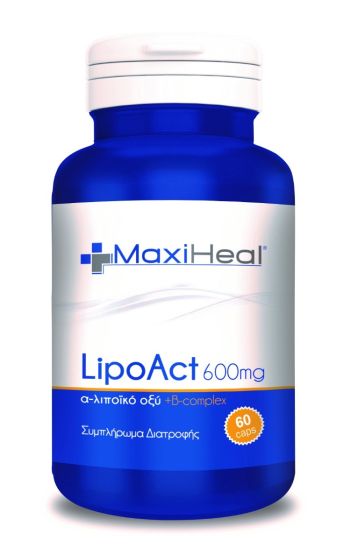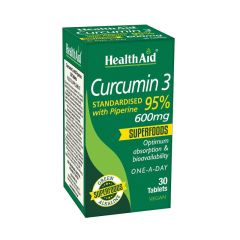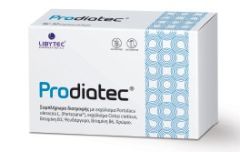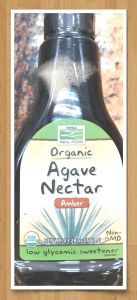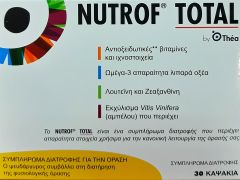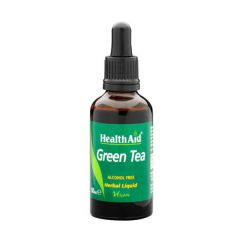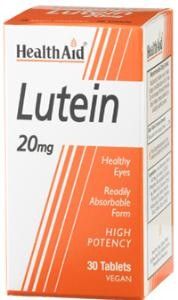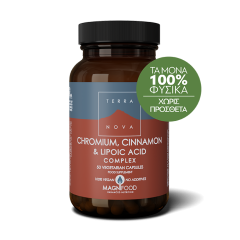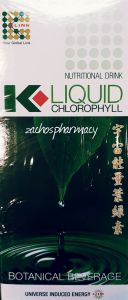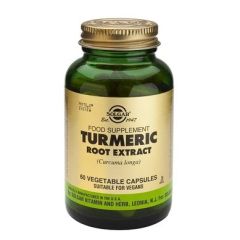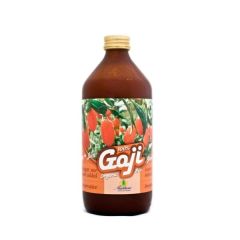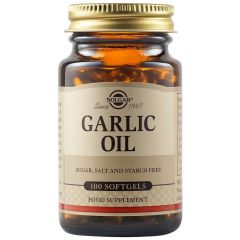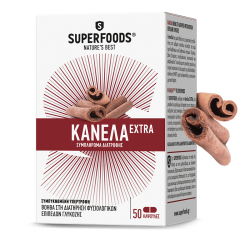Maxiheal Lipoact Alpha lipoic acid & B-complex 60caps - Potent antioxidant supplement
Special Price
€39.50
Regular Price
€46.54
In stock
SKU
5567
Maxiheal Lipoact Alpha lipoic acid & B-complex 60caps - Potent antioxidant supplement
What is lipoic acid and what are its properties?
The α-lipoic acid (ALA) 1 is unique among the natural antioxidants. Due to its ability to meet the necessary conditions (food absorption, transformation into cells and tissues in active form, recycling of other antioxidants, permeation of the blood-brain barrier, ability to act in aqueous and fatty environments, low toxicity) becomes potentially effective a factor in dealing with situations where oxidative stress is involved.
The antioxidant properties of ALA consist of the following:
Inactivation - scanning - free oxygen radicals (reactive oxygen species ROS)
Regeneration of endogenous antioxidants such as glutathione, vitamin C and E and CoQ10 coenzyme
Formation of chelators by preventing the formation of free radicals of oxygen (ROS)
A-lipoic acid (ALA) is a natural antioxidant that produces our own body and is present in animals and plants. But with the passing of age its production is decreasing. Rich sources are red meat, liver, spinach, broccoli, yeast, Brussels sprouts, etc.
It has been characterized as the 'universal', 'ideal' and 'metabolic' antioxidant. It is a natural dithiol compound and is widely known as a major cofactor for mitochondrial enzymes. It neutralizes free radicals in both fat and watery parts of the cell, as opposed to vitamin C (water soluble) and vitamin E (fat soluble). Because ALA is a small molecule and has an amphiphilic character - insoluble and water soluble - it crosses the blood-brain barrier3, allowing it to be used by many different tissues of the body in different ways.
ALA is a major component of dehydrogenase, an enzyme that can help slow down the natural aging process. Once the ALA is taken up by the body, it is reduced in its equally active form to Dihydrolipoic Acid (DHLA) 4, which is also its intrinsic active metabolite. Both ALA and DHLA are powerful antioxidants.
Upon entering the tissues, ALA exerts its antioxidant activity on both intracellular and extracellular space, especially in mitochondria - the "energy plant" of the organism, where it acts as a coenzyme in various biochemical pathways.
As an antioxidant, both ALA and DHLA have a direct cleansing effect by inactivating free radicals. ALA plays a major role in the so-called 'antioxidant network'. It recycles and prolongs the metabolic life of glutathione, vitamins C and E as well as coenzyme CoQ105. These varied actions suggest that he acts through multiple mechanisms.
ALA is used to treat diabetic neuropathy, one of the most common and most painful complications of diabetes. Clinical data indicate that administration of ALA contributes to improving glycemic control by promoting glucose metabolism in a way that mimics the effect of insulin. ALA appears to trigger the insulin-signaling pathway and thereby increase glucose uptake in muscle and fat cells. On this basis ALA is referred to as an insulinomimetic factor6.
ALA is also an excellent metal detoxifier, particularly for mercury and cadmium, with which it binds and neutralizes it for elimination7. Research has shown that ALA can help people with genetic defects that lead to myopathies, reduce ischemia-reperfusion accidents in the heart and brain and finally inhibit the activation of the 'kappa-beta nuclear factor' a vitamin complex involved in the cancer and the development of AIDS8.
Bibliography
3. Wada H, Shintani D, and Ohirogge J (1997). Why do mitochondria synthesize fatty acids? Evidence for involvement in lipoic acid production. Proc.Natl.Acad.Sci. U.S.A., 94, 1591-1596
4. Parker L, Kraemer K, Rimbach G. Molecular aspects of lipoic acid in the prevention of diabetic complications.
Nutrition.2001; 17: 888-895
5. Packer L, Kraemer K, Rimbach G. Molecular aspects of lipoic acid in the prevention of diabetic complications.
Nutrition.2001; 17: 888-895
Packer L. Neuroprotection by the metabolic antioxidant alpha-lipoic acid.
Free Radic. Biol. Med. 1997; 22: 359-378
6. Estrada DE, Ewart HS, Tsakiridis T et al. Stimulation of glycose uptake by the natural alpha lipoic acid coenzyme: participation of the insulin signaling pathway
Diabetes. 1996; 45: 1798-1804
Yaworsky K, Somwar R, Ramlal T et al. Interaction of the insulin-sensitive pathway in the stimulation of glycose transport by lipoic acid in 3T3-L1 adipocytes.
Diabetologia 2000; 43: 294-303
7. Rooney JPK. The role of thiols, dithiols, nutritional factors and interacting ligands in the toxicology of mercury.
60caps.
The α-lipoic acid (ALA) 1 is unique among the natural antioxidants. Due to its ability to meet the necessary conditions (food absorption, transformation into cells and tissues in active form, recycling of other antioxidants, permeation of the blood-brain barrier, ability to act in aqueous and fatty environments, low toxicity) becomes potentially effective a factor in dealing with situations where oxidative stress is involved.
The antioxidant properties of ALA consist of the following:
Inactivation - scanning - free oxygen radicals (reactive oxygen species ROS)
Regeneration of endogenous antioxidants such as glutathione, vitamin C and E and CoQ10 coenzyme
Formation of chelators by preventing the formation of free radicals of oxygen (ROS)
A-lipoic acid (ALA) is a natural antioxidant that produces our own body and is present in animals and plants. But with the passing of age its production is decreasing. Rich sources are red meat, liver, spinach, broccoli, yeast, Brussels sprouts, etc.
It has been characterized as the 'universal', 'ideal' and 'metabolic' antioxidant. It is a natural dithiol compound and is widely known as a major cofactor for mitochondrial enzymes. It neutralizes free radicals in both fat and watery parts of the cell, as opposed to vitamin C (water soluble) and vitamin E (fat soluble). Because ALA is a small molecule and has an amphiphilic character - insoluble and water soluble - it crosses the blood-brain barrier3, allowing it to be used by many different tissues of the body in different ways.
ALA is a major component of dehydrogenase, an enzyme that can help slow down the natural aging process. Once the ALA is taken up by the body, it is reduced in its equally active form to Dihydrolipoic Acid (DHLA) 4, which is also its intrinsic active metabolite. Both ALA and DHLA are powerful antioxidants.
Upon entering the tissues, ALA exerts its antioxidant activity on both intracellular and extracellular space, especially in mitochondria - the "energy plant" of the organism, where it acts as a coenzyme in various biochemical pathways.
As an antioxidant, both ALA and DHLA have a direct cleansing effect by inactivating free radicals. ALA plays a major role in the so-called 'antioxidant network'. It recycles and prolongs the metabolic life of glutathione, vitamins C and E as well as coenzyme CoQ105. These varied actions suggest that he acts through multiple mechanisms.
ALA is used to treat diabetic neuropathy, one of the most common and most painful complications of diabetes. Clinical data indicate that administration of ALA contributes to improving glycemic control by promoting glucose metabolism in a way that mimics the effect of insulin. ALA appears to trigger the insulin-signaling pathway and thereby increase glucose uptake in muscle and fat cells. On this basis ALA is referred to as an insulinomimetic factor6.
ALA is also an excellent metal detoxifier, particularly for mercury and cadmium, with which it binds and neutralizes it for elimination7. Research has shown that ALA can help people with genetic defects that lead to myopathies, reduce ischemia-reperfusion accidents in the heart and brain and finally inhibit the activation of the 'kappa-beta nuclear factor' a vitamin complex involved in the cancer and the development of AIDS8.
Bibliography
3. Wada H, Shintani D, and Ohirogge J (1997). Why do mitochondria synthesize fatty acids? Evidence for involvement in lipoic acid production. Proc.Natl.Acad.Sci. U.S.A., 94, 1591-1596
4. Parker L, Kraemer K, Rimbach G. Molecular aspects of lipoic acid in the prevention of diabetic complications.
Nutrition.2001; 17: 888-895
5. Packer L, Kraemer K, Rimbach G. Molecular aspects of lipoic acid in the prevention of diabetic complications.
Nutrition.2001; 17: 888-895
Packer L. Neuroprotection by the metabolic antioxidant alpha-lipoic acid.
Free Radic. Biol. Med. 1997; 22: 359-378
6. Estrada DE, Ewart HS, Tsakiridis T et al. Stimulation of glycose uptake by the natural alpha lipoic acid coenzyme: participation of the insulin signaling pathway
Diabetes. 1996; 45: 1798-1804
Yaworsky K, Somwar R, Ramlal T et al. Interaction of the insulin-sensitive pathway in the stimulation of glycose transport by lipoic acid in 3T3-L1 adipocytes.
Diabetologia 2000; 43: 294-303
7. Rooney JPK. The role of thiols, dithiols, nutritional factors and interacting ligands in the toxicology of mercury.
60caps.
| Manufacturer | Maxiheal |
|---|---|
| Pieces | 1 |
| Site Code | 5567 |
| ean13 | 5200040113004 |
| Capsules | 60 |
| available in 1-3 working days | No |
Write Your Own Review

